In today’s ecommerce landscape, retaining customers is as crucial as attracting new ones. This is where an effective loyalty program comes into play, and luckily, building one has never been easier. When it comes to setting up your loyalty program, you simply don’t need an all-singing all-dancing offering to get things started – in fact, we often recommend starting small and then building on those solid foundations.
In this guide, we’re going to demonstrate why you don’t need all the bells and whistles to get started. But first, let’s start with the basics.
Understanding loyalty programs
A loyalty program, in its simplest form, is a structured rewards system offered by businesses to encourage repeat purchases and brand loyalty. These programs can take various shapes – from punch cards at your local coffee shop to intricately tiered membership systems – with varying levels of sophistication. But their essence remains the same: rewarding customers for their loyalty.
Why getting started with a basic loyalty program is better than not starting at all
Just as a garden needs care, attention, and regular watering to flourish, your customer base requires cultivation. But what if you’re a one-man marketing team with no time to spare time, and the prospect of launching an elaborate loyalty program feels overwhelming? The good news is that getting started with a basic loyalty program is not only manageable but also far better than not starting one at all. Here’s why.
1. Customer engagement from the get-go
Imagine you’re at the beginning of your entrepreneurial journey, eagerly awaiting your first customers. A basic loyalty program provides an immediate way to engage with these early adopters. It’s like extending a warm handshake and saying, “We appreciate your business, and here’s a little something to show our gratitude.”
Even in its simplest form, a loyalty program allows you to connect with your customers on a personal level. It provides a reason for them to return to your business, fostering a sense of belonging and a genuine connection.
2. Incremental revenue growth
When customers have an incentive to return to your business to redeem rewards, they’re more likely to make additional purchases during their visits. Over time, these additional sales can add up significantly, with 64% of loyalty program members spending more money to maximize points earnings.
The revenue boost from a basic loyalty program can be particularly beneficial for smaller businesses with limited marketing budgets. It’s a cost-effective way to increase sales without resorting to aggressive discounting.
3. Data collection and personalization
Basic loyalty programs often involve collecting customer information, such as email addresses or purchase histories. This data can be invaluable as your business grows, as personalization is something that is really important for today’s consumers. In fact, 70% of customers say they would be loyal to a brand if they got personalized offers, and 42% are annoyed when content isn’t personalized.
With this data, you can begin personalizing your interactions. For example, you can send tailored offers or recommendations based on a customer’s past purchases. Personalization shows customers that you understand their needs and preferences, making them more likely to return.
4. Competitive edge
In a competitive marketplace, setting your business apart can be a challenge. A basic loyalty program, even if it’s not the most elaborate one around, can be a unique selling point. It tells customers that you value their loyalty and want to reward them for it.
When comparing your business to others that don’t offer any loyalty incentives, customers may choose you simply because they appreciate the acknowledgement and rewards your program provides. In one study, 79% of consumers even said they were more likely to choose a retailer that offered a loyalty program over one that didn’t.
The key features of a basic loyalty program
Now we’ve covered the value you can expect from your loyalty program, let’s dive into the features you’ll want to focus on first. Even the most basic loyalty program will be successful if it consists of several key elements:
Account creation
Incentivize customers to join your loyalty program by awarding loyalty points for creating an account.
Make a Purchase rule
The Make a Purchase rule allows customers to gain points for spending money at your store. Customers will earn points for every $1 (or whichever currency your store is set to).
Top tip: We advise setting this rule to give between 1-5 points per $ spent
Social follow features
Increase your store’s social reach as well as offering your customers additional ways to engage with your loyalty program by setting up social share features. With this feature you can offer your customers points when they follow you on Facebook, Instagram, and Twitter/X.
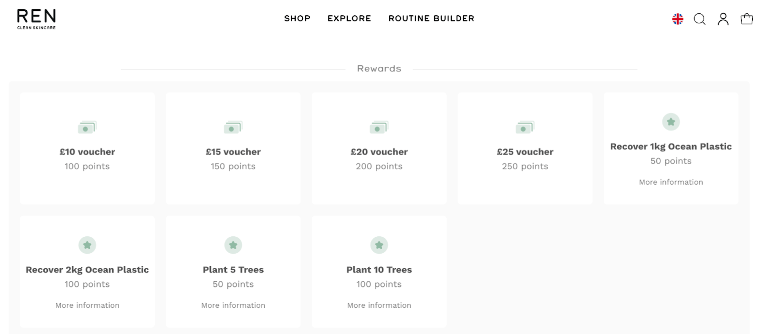
REN gives their customers 20 points for following them on Instagram.
Birthday rule
Make your customers feel extra special by giving them points for their birthday! Your customers are prompted to enter their date of birth, and then once a year on that specific date, they’ll be awarded the points.
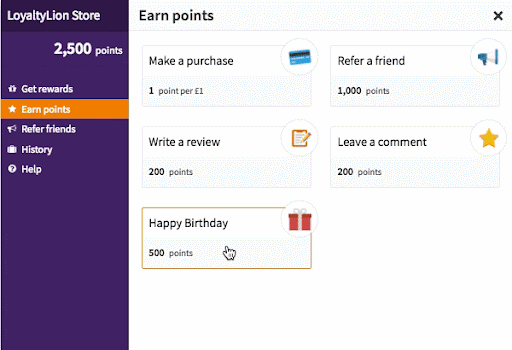
Refer-a-friend
Referrals are proven to be a successful way to increase customer acquisition whilst keeping loyal customers engaged, and it’s really easy to get your refer-a-friend activity set up when you’re building your program.
Integrations
Enhance your customer experience by ensuring all your existing apps are connected and talking to each other.
The 3 steps to building your beginner loyalty program
1. Enrollment
Customers who engage with your loyalty program are 6 times more likely to return for a second purchase.
- Set up the account creation rule. Give customers enough points to unlock a reward with their first purchase.
- Set up notifications. Use onsite notifications to make new visitors aware of your program and promote enrollment.
- Promote your program. Highlight your new loyalty program by adding it to your site’s top navigation and footer links and by posting about it on social media.
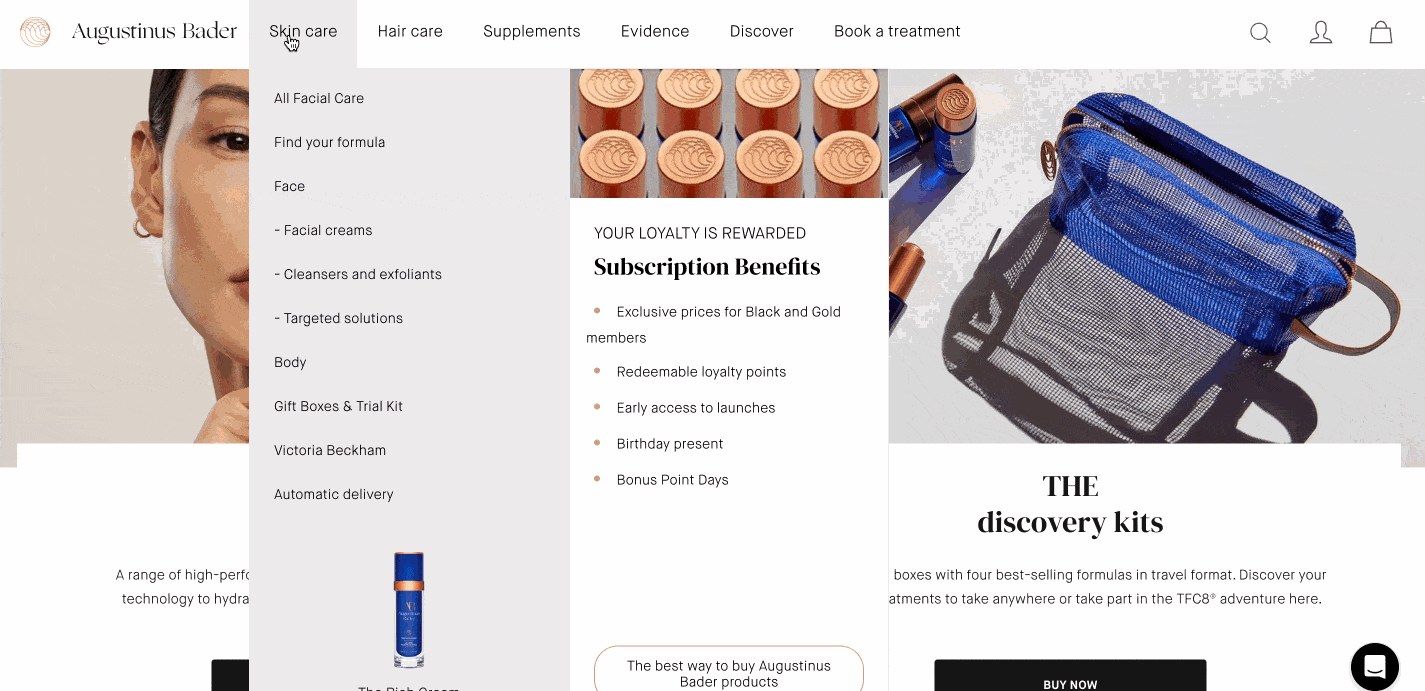
We love how Augustinus Bader promote sign ups to their program throughout their entire site by including this ‘Subscription benefits’ info on every single tab – you really can’t miss it.
2. Activity rules
Members who redeem rewards purchase 2.75 times more per year than non-members.
- Choose the value of your points. Decide how much it costs for customers to earn and redeem points/rewards at your store.
- Create multiple earning opportunities. Help customers earn more points by setting up multiple activity rules outside of just transactions – for example, social following or birthdays like we mentioned above.
3. Loyalty emails
Loyalty emails perform 4 times better than other marketing messages.
- Set up welcome emails. Ensure you’re welcoming new members with clear information about how to use the program.
- Automate loyalty emails. Configure automated yet personalized points statement and reward available emails that keep customers engaged between purchases.
- Set up your ESP integration. Integrate LoyaltyLion with your ESP and start using loyalty data to add personalization to your wider email and SMS strategies.
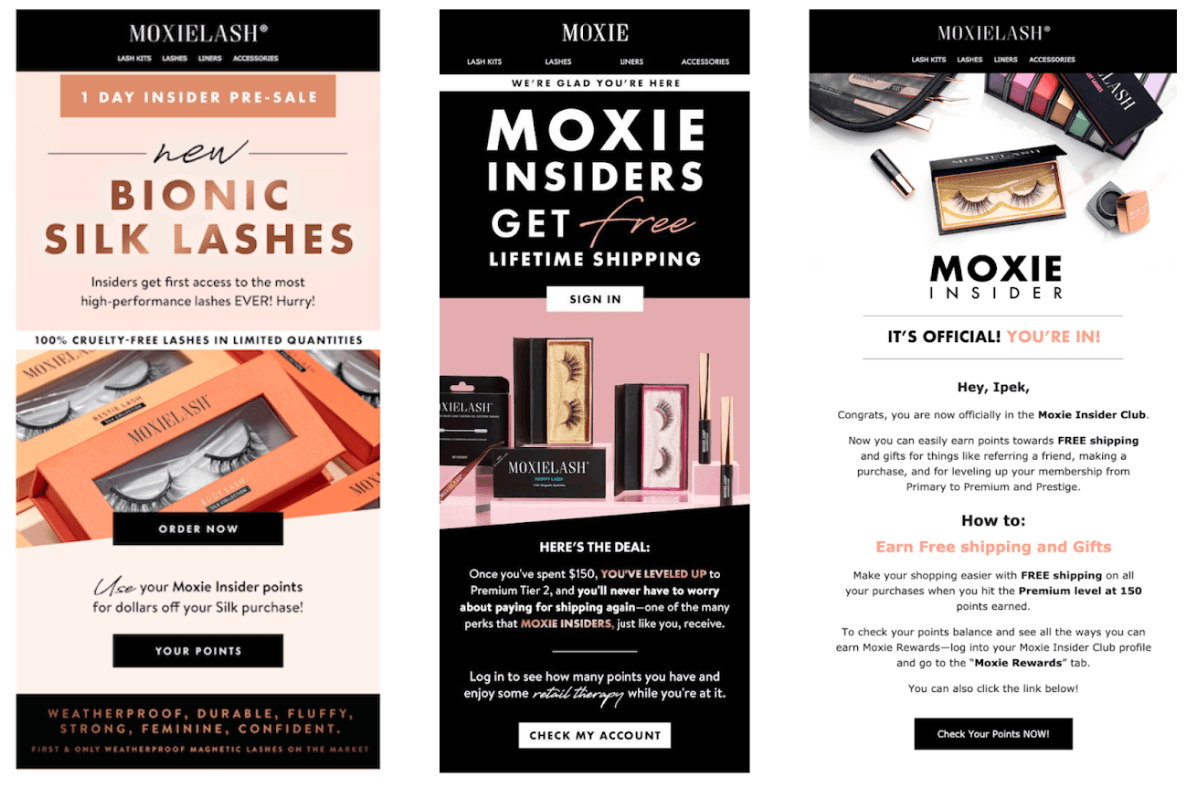
MoxieLash use the LoyaltyLion x Klaviyo integration to send loyalty emails that really cut through the noise.
The evolution of a loyalty program over time
Let’s be clear; this is only the beginning! While we truly believe that starting small is always better than not starting at all, that doesn’t mean you can’t grow and develop your program over time (if you want to, of course).
Here is why it pays to invest in loyalty over time.
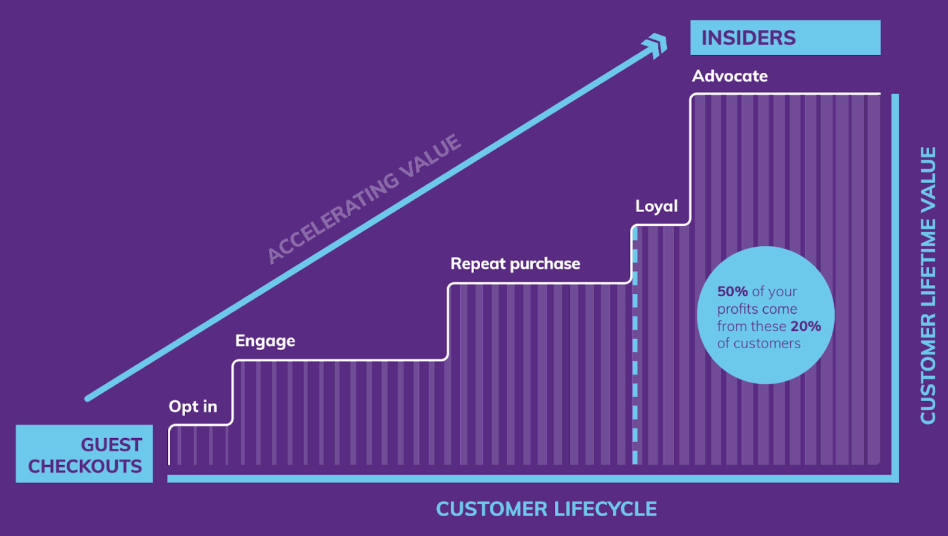
As your loyalty program evolves, your shoppers will continue to move from ‘Guest Checkouts’ through to ‘Insiders’, increasing their CLV as they do so. Your top 20% are where 50% of your profits come from, so by nurturing your customers, keeping them engaged, and ensuring they don’t churn (all of which is achieved through your loyalty program), you’re creating a VIP customer segment who spend more and spend often!
Final thoughts
Building a basic loyalty program is a powerful strategy for stores in today’s competitive ecommerce landscape. While it may seem like a small step, it can have a significant impact on customer engagement, revenue growth, data collection, and your competitive edge.
Want to get started today? Book a demo to take the first step.





